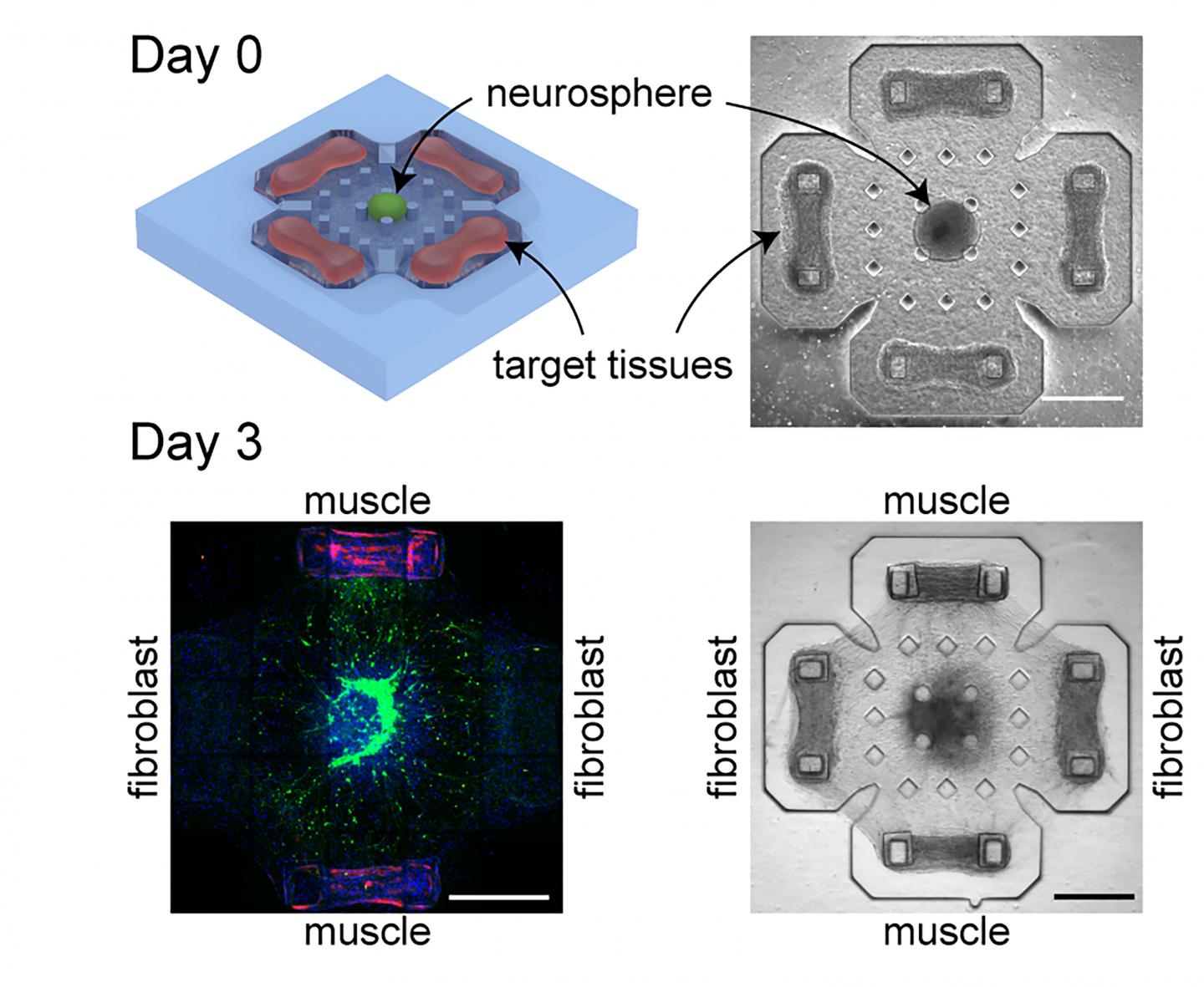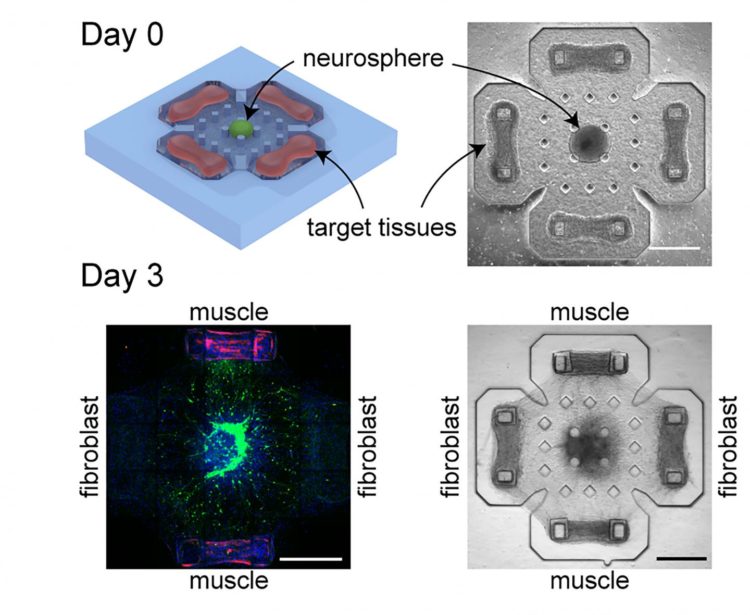A platform designed for coculturing a neurosphere and muscle cells allows scientists to capture the growth of neurons toward muscles to form neuromuscular junctions

Credit: Image courtesy of the authors. Fluorescence microscopy image (bottom left) taken at the Core Facilities in Carl R. Woese Institute of Genomic Biology at University of Illinois at Urbana-Champaign.
WASHINGTON, March 10, 2020 — Scientists watched the formation of a self-emergent machine as stem cell-derived neurons grew toward muscle cells in a biohybrid machine, with neural networks firing in synchronous bursting patterns. The awe-inspiring experiment left them with big questions about the mechanisms behind this growth and a proven method of capturing data for continued study of bioactuators.
In a paper published in APL Bioengineering, from AIP Publishing, the authors were able to capture many of the mechanisms at work where neurons and muscles are cocultured. Using a platform they designed, which holds a suspended neurosphere and several types of muscle cells in different compartments, their work is the first to report a 3D neuromuscular junction in an open platform with multiple muscles.
“The most impactful result is the emergence of a machine where actuators (muscles) emerge from a droplet of a mixture of cell-extracellular matrix, where neurons form a network all by themselves,” author Taher Saif said. “It is where neurons reach out to the muscles to form neuromuscular junctions, resulting in a machine that we can operate by shining light, and yet we do not understand with certainty how all of this happened.”
Neuromuscular junctions are the source of motor activity, with motor neurons firing to cause muscles to contract. In tiny biorobots using muscle cells as actuators, the ability to tune parameters would allow more precise designs with desirable characteristics and predictable behaviors. Yet, the emerging field of biohybrid robots, including intelligent drug delivery, environment sensing and biohybrid blood circulation pumps, needs proven experimental methods.
“This stage can be compared to the time of Wright brothers trying to fly when potential applications were far and away,” Saif said. “The field of biohybrid robots is trying to explore whether machines can at all be made with living cells and scaffolds, what are the scaling laws, and what are the minimum conditions for their emergence.”
The authors closely examined the morphology of the neuromuscular units that formed, applied optical stimulation to quantify muscle dynamics, recorded electrical activity of neurospheres and identified mechanisms for modulating bioactuator behavior.
“This is a new design paradigm for biological machines, such as biohybrid robots,” Saif said. “Here, the bidirectional interactions emerge and take their own course. If we can understand these interactions, we will be able to guide and modulate them to optimize outcomes, such as high muscle force or synchrony in neuron firing.”
###
The article, “Development of 3D neuromuscular bioactuators,” is authored Onur Aydin, Austin P. Passaro, Mohamed Elhebeary, Gelson J. Pagan-Diaz, Anthony Fan, Sittinon Nuethong, Rashid Bashir, Steven L. Stice and M. Taher A. Saif. The article will appear in APL Bioengineering on March 10, 2020 (DOI: 10.1063/1.5134477). After that date, it can be accessed at https:/
ABOUT THE JOURNAL
APL Bioengineering is an open access journal publishing significant discoveries specific to the understanding and advancement of physics and engineering of biological systems. See http://aip.
Media Contact
Larry Frum
[email protected]
301-209-3090
Related Journal Article
http://dx.





